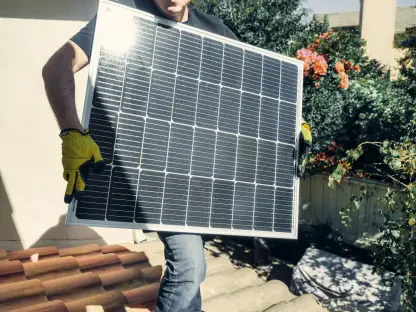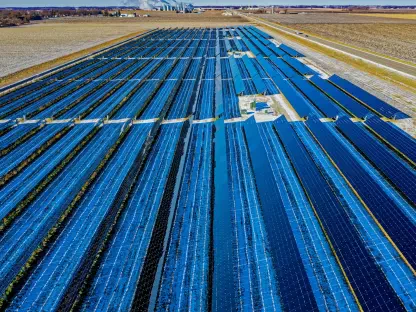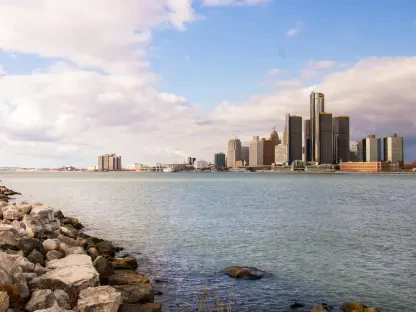Maryland is at a crossroads in its energy journey. The state is grappling with the challenge of meeting growing electricity demands while addressing community safety concerns. This article delves into the complexities of deploying energy storage solutions, particularly battery systems, and the public opposition they often face.
The Push for Energy Storage
BGE’s Tracys Landing Project
In Tracys Landing, BGE has undertaken a significant step by installing an 8-rack lithium-ion battery system capable of storing 2.5 megawatts of energy. This system, which went online in January 2023, was primarily installed to provide backup power in an area prone to outages during extreme weather. The installation is located on the periphery of Anne Arundel County. These batteries are designed to relieve the strain on the local power grid. BGE’s spokesperson, Nick Alexopulos, underscores the necessity of sending significant power through lines in such rural areas, emphasizing that robust infrastructure is critical for maintaining service reliability.
The Tracys Landing project showcases the technical feasibility and potential benefits of battery storage. By enabling energy to be stored during periods of low demand and released during peak usage times, the batteries enhance the grid’s adaptability. This flexibility can alleviate the need for additional fossil fuel-based power generation, aligning with Maryland’s environmental goals. However, despite these advantages, local communities remain apprehensive about the implications of having such installations nearby. The broader acceptance of such technology will hinge on transparent communication and rigorous safety assurances.
Community Concerns in Oxon Hill
In stark contrast to the Tracys Landing initiative, PEPCO’s attempt to install a 1-megawatt battery system in the urban setting of Oxon Hill faced significant challenges. Local residents vehemently opposed the project due to concerns about thermal runaway incidents where batteries can overheat and release flammable gas. These safety fears prompted a strong community backlash, leading the Prince George’s County Council to ultimately reject the project in 2023. This incident highlights the broader issue of community resistance to energy infrastructure, reflecting the fear and uncertainty associated with new technology deployments.
The situation in Oxon Hill underscores the importance of addressing public perception when introducing energy projects. PEPCO’s failure to alleviate community concerns emphasizes the need for a comprehensive approach that includes risk assessments, safety measures, and active engagement with residents. The opposition encountered in Oxon Hill is not an isolated incident but part of a wider trend where communities are increasingly vocal about the potential risks posed by energy infrastructure. Moving forward, utility companies and policymakers will need to develop strategies to build trust and ensure that projects are not only technically sound but also socially acceptable.
Maryland’s Ambitious Energy Goals
Climate Solutions Act
Maryland’s ambitious goals, as mandated under the Climate Solutions Act, represent the state’s unwavering commitment to cutting greenhouse gases and achieving net-zero emissions. The legislative framework is designed to reduce greenhouse gases by 60% by 2031 and reach net-zero by 2045. A central component of this plan is the creation of 3,000 megawatts of battery storage by 2033, a target that ranks among the most aggressive in the nation. This initiative is a cornerstone in the state’s broader strategy to transition to a sustainable energy future and mitigate the impacts of climate change.
Despite these commendable goals, the implementation of the Climate Solutions Act faces significant hurdles. Achieving such an ambitious target for battery storage requires large-scale investment, technological advancements, and overcoming logistical challenges. Furthermore, balancing the environmental benefits with public safety concerns adds another layer of complexity. Policymakers must navigate these intricate dynamics, ensuring that regulatory frameworks and incentives are in place to encourage the adoption of clean energy solutions, while simultaneously addressing the legitimate concerns of Maryland’s residents.
Reliance on Out-of-State Electricity
While Maryland strives to achieve its energy goals, an ongoing challenge is its reliance on out-of-state electricity, with 40% of its electricity imported from other states. This dependency poses a significant obstacle to achieving energy independence and meeting emissions targets. Paul Pinsky, Director of the Maryland Energy Administration, emphasizes that without significant in-state production, Maryland will struggle to meet its ambitious targets. The reliance on out-of-state electricity increases the appeal of gas-fired power plants, which, while cleaner than coal, do not match the environmental benefits of renewable energy sources.
The potential shift towards new gas-fired power plants raises further questions about the state’s long-term energy strategy. Organizations like Baltimore-based Constellation Energy, which plans to acquire Calpine Corp., may play pivotal roles in this transition. However, as State Senator Brian Feldman points out, the economic viability of natural gas, despite its cleaner profile compared to coal, still necessitates a careful assessment of its role within Maryland’s overall energy portfolio. Strategies must be developed to transition from reliance on fossil fuels to the more extensive adoption of renewable energy solutions, ensuring alignment with the state’s climate goals.
The Role of Battery Storage
Legislative Push for Battery Storage
Battery storage emerges as a promising solution to Maryland’s energy conundrum, capable of storing energy from various sources and reducing the need for new gas plants. This technology ensures efficient use of locally produced power and serves as a valuable buffer. Del. Lorig Charkoudian is at the forefront of this legislative push, drafting the Abundant, Affordable Clean Energy Act. The act aims to scale up from a pilot project initiated in 2019 to widespread battery construction overseen by the Public Service Commission. This legislative push signifies a proactive approach to integrating battery storage into the state’s energy framework.
The proposed legislative measures reflect a broader recognition of the potential benefits of battery storage. Batteries can stabilize the grid, provide backup power during outages, and support the integration of renewable energy sources. However, realizing these benefits on a larger scale will require overcoming technical, economic, and regulatory challenges. Ensuring the affordability and accessibility of battery technology is crucial for widespread adoption. Additionally, policymakers must develop robust safety standards and engage with communities to address potential concerns, fostering an environment where advanced energy solutions can thrive.
Regional Strategy and Future Projections
The legislative initiatives in Maryland align with a broader regional strategy managed by PJM Interconnection, which oversees the state’s role in the regional electricity grid. Del. Lorig Charkoudian forecasts a substantial increase in battery storage capacity, with over 1,600 megawatts projected to be added within the next two years. This anticipated surge represents a significant step forward in enhancing grid reliability and accommodating the growing share of renewable energy. However, battery storage projects continue to face their own set of challenges, as evidenced by the canceled Oxon Hill project, which had to be reconfigured to feature a smaller, solar-and-battery microgrid.
The regional strategy emphasizes collaboration and coordination among states to optimize energy resources and infrastructure. Lessons from other states, like California’s extensive battery storage deployment, provide valuable insights. California, with its 10 gigawatts of battery storage, offers a benchmark, highlighting both the potential and the pitfalls of large-scale battery adoption. While battery systems can significantly enhance grid resilience and support renewable integration, incidents like the battery facility fire in Northern California underscore the importance of stringent safety protocols and community engagement. Maryland’s strategy must incorporate these lessons to ensure the successful and safe implementation of its battery storage ambitions.
Community Resistance and Safety Concerns
Case Studies and Public Perception
The pilot initiatives and broader legislative efforts in Maryland are set against a backdrop of experiences from other states. California’s incorporation of 10 gigawatts of battery storage, although impressive, came with challenges that Maryland can learn from. The battery facility fire at Vistra Energy in Northern California serves as a stark reminder of the safety concerns associated with energy storage systems. Such incidents contribute to the inherent tension between the need for modernized energy solutions and the apprehensions local communities hold. Public perception plays a crucial role in the success of energy projects, and addressing safety concerns is paramount for gaining trust and acceptance.
As Maryland navigates its energy transition, these case studies highlight the importance of proactive risk management and transparent communication. Communities are rightfully concerned about the potential hazards posed by new energy technologies. In response, utilities and regulators must prioritize rigorous safety standards and engage with residents to build trust. Innovative solutions, such as incorporating advanced monitoring systems and emergency response protocols, can help mitigate risks. Ensuring that communities are informed and involved in the decision-making process is essential for fostering a collaborative approach to energy infrastructure development.
Public Engagement and Regulatory Challenges
The challenges of gaining public acceptance for energy projects are evident in the contentious encounter PSC Chair Fred Hoover experienced in Ocean City. Local residents criticized what they perceived as top-down impositions from Annapolis, reflecting the broader skepticism towards state-led initiatives. This incident highlights the complexities of energy infrastructure development and the need for regulatory bodies to balance innovation with community engagement. Successful projects must navigate the intricate dynamics of legislative ambitions, regulatory challenges, and community dynamics. Building a sustainable energy future requires reconciling the technical and environmental benefits of new technologies with the genuine concerns of the communities they will serve.
Maryland’s approach to public engagement must go beyond mere consultation. It requires active participation from residents in the planning and implementation phases of energy projects. Utilities and policymakers must adopt a collaborative mindset, ensuring that community voices are heard and addressed. This includes transparent sharing of information about potential risks and benefits, as well as incorporating feedback into project designs. Regulatory frameworks should be flexible enough to adapt to emerging technologies while maintaining stringent safety standards. By fostering a culture of trust and collaboration, Maryland can pave the way for a more harmonious integration of advanced energy solutions.
Balancing Innovation and Community Acceptance
The Path Forward
Maryland stands at a pivotal point in its energy evolution, struggling to balance increasing electricity demand and community safety issues. The state faces a complex challenge: how to meet these demands while ensuring public safety. This article explores the intricacies of deploying energy storage solutions, with a particular focus on battery systems. Despite their potential benefits, these systems often encounter significant public opposition. Concerns range from environmental impacts to safety risks, making it difficult to gain widespread acceptance. As Maryland navigates this journey, finding a viable path forward is crucial. The state must consider not only the technological advancements that these energy storage solutions offer but also address the community’s hesitations. Engaging with the public, educating them on the safety measures in place, and demonstrating the long-term benefits can help to alleviate some of the opposition. In doing so, Maryland can work toward a future that balances energy needs with safety and sustainability, paving the way for a more secure and efficient energy landscape.









